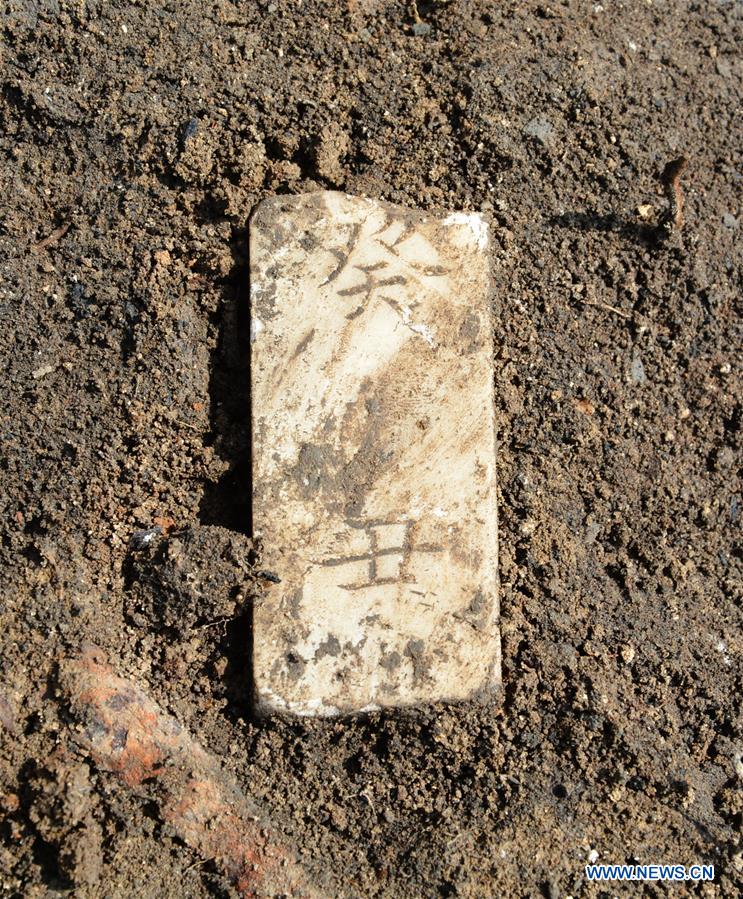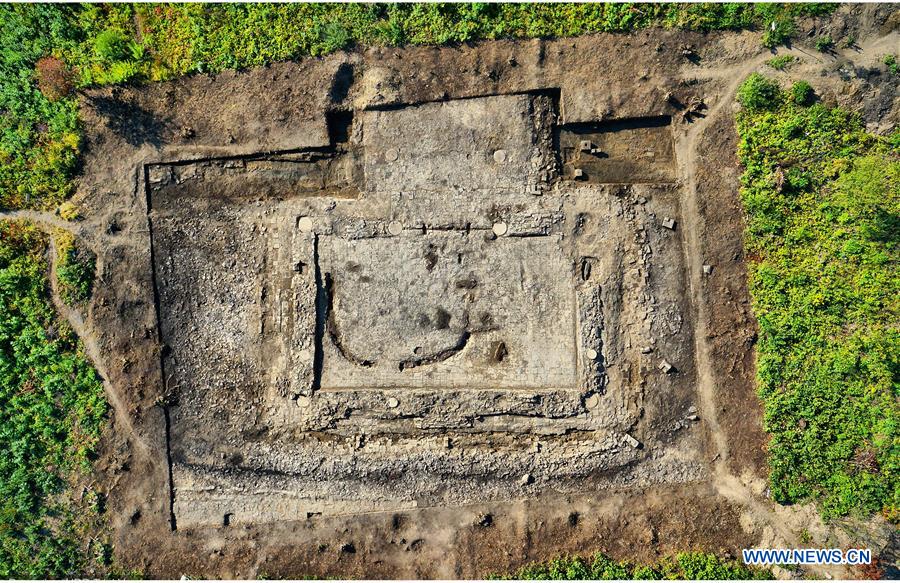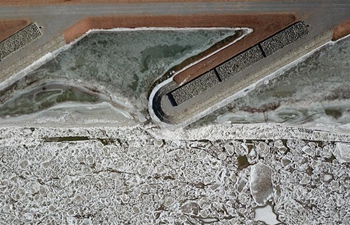 ?
?File photo shows the debris of a jade book discovered in the archaeological site in the town of Baoma, on a hill in Antu County in northeast China's Jilin Province. The ruins of Baoma were shown by a jade book discovered therein to be the site of a temple used by the royal family of the Jin Dynasty (1115-1234) for worship at Mount Changbai, according to archeologists. The ruins of Baoma Town are among the best-preserved and the most important architectural remains of the Jin Dynasty. The findings in Baoma site was announced one of the six greatest archeological discoveries of the country in 2017 by the Chinese Academy of Social Sciences. The six findings contain information on human activity over a time span of more than 40,000 years. (Xinhua)
TEMPLE FOR WORSHIP CONFIRMED
The ruins of the town of Baoma, on a hill in Antu County in northeast China's Jilin Province, were shown by a jade book discovered therein to be the site of a temple used by the royal family of the Jin Dynasty (1115-1234) for worship at Mount Changbai, according to archeologists.
The ruins of Baoma Town are among the best-preserved and the most important architectural remains of the Jin Dynasty.?

File photo shows the archaeological site in the town of Baoma, on a hill in Antu County in northeast China's Jilin Province. The ruins of Baoma were shown by a jade book discovered therein to be the site of a temple used by the royal family of the Jin Dynasty (1115-1234) for worship at Mount Changbai, according to archeologists. The ruins of Baoma Town are among the best-preserved and the most important architectural remains of the Jin Dynasty. The findings in Baoma site was announced one of the six greatest archeological discoveries of the country in 2017 by the Chinese Academy of Social Sciences. The six findings contain information on human activity over a time span of more than 40,000 years. (Xinhua)















